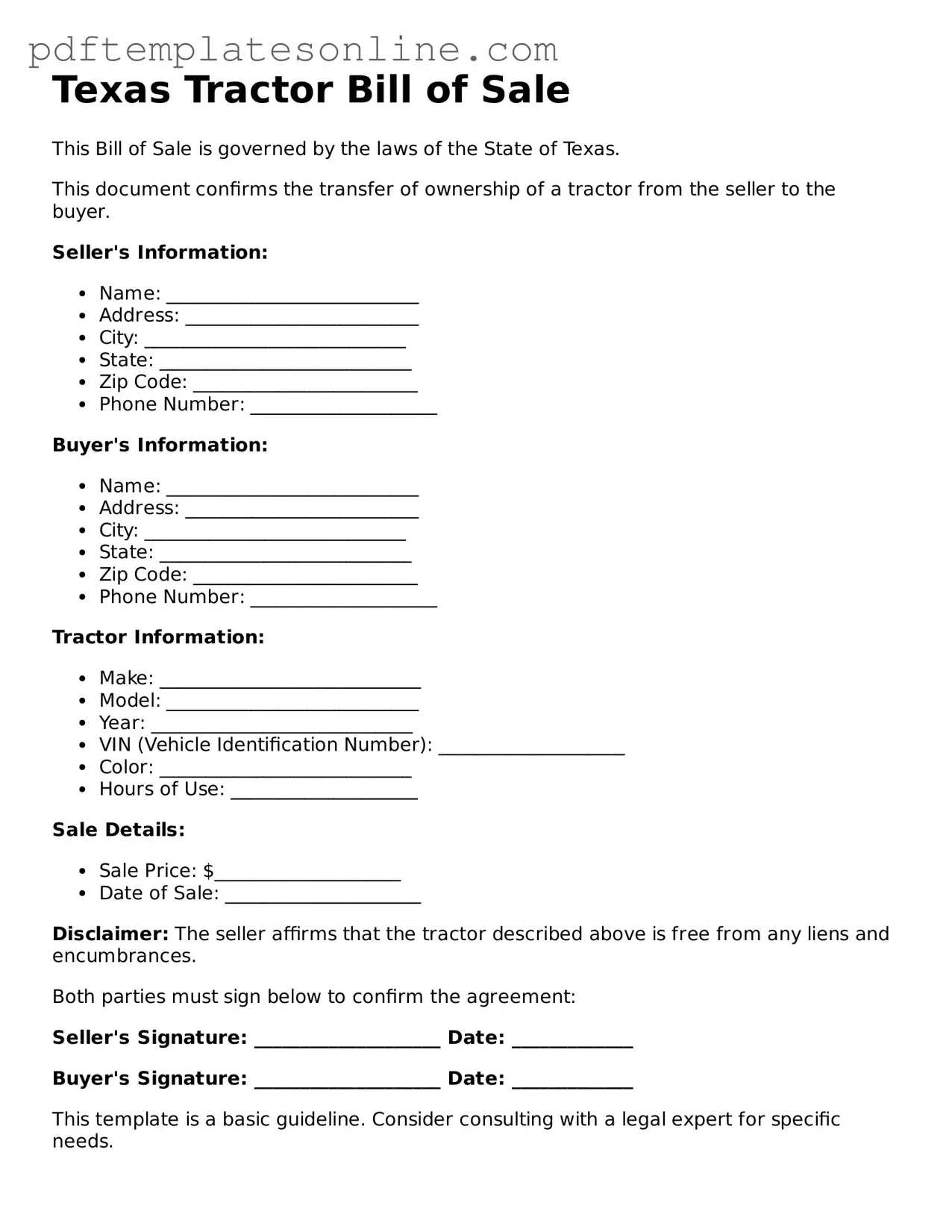When completing the Texas Tractor Bill of Sale form, many individuals make common mistakes that can lead to complications. One frequent error is failing to provide accurate information about the tractor. This includes details such as the make, model, year, and Vehicle Identification Number (VIN). Inaccurate information can create confusion and may affect the transfer of ownership.
Another mistake is neglecting to include the sale price. This is crucial for both the buyer and seller, as it establishes the value of the transaction. Omitting this information can lead to misunderstandings and disputes later on.
Many people also forget to sign the document. A signature is essential for validating the sale. Without it, the form may not hold up in legal situations. Both the buyer and seller should ensure they sign the form before finalizing the transaction.
Some individuals fail to date the form correctly. The date of the sale is important for record-keeping and tax purposes. If the date is missing or incorrect, it can lead to issues with the registration of the tractor.
Another common mistake is not providing the correct address for both the buyer and seller. This information is vital for identification and contact purposes. Incorrect addresses can complicate future communications or legal matters.
Inaccurate or incomplete information regarding the payment method can also be problematic. Whether payment is made in cash, check, or another form, it should be clearly stated. This helps prevent misunderstandings about the transaction.
Some people overlook the need for a witness or notary. While not always required, having a witness can add an extra layer of security to the sale. It may be beneficial in case of disputes regarding the transaction.
Additionally, individuals sometimes forget to keep a copy of the completed form. Retaining a copy is essential for both parties. It serves as proof of the transaction and can be useful for future reference.
Failing to check for typos or errors before submission is another mistake. Simple mistakes can lead to significant issues. Taking the time to review the document can save both parties from potential headaches later on.
Lastly, people may not understand the importance of local laws and regulations. Each county may have specific requirements for the sale of a tractor. Familiarizing oneself with these regulations can ensure a smooth transaction.
